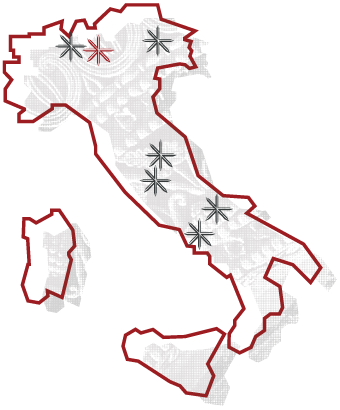Lombard Totemic Animals
During the twelve nights following the winter solstice, the god Wotan rides his incredible eight-legged grey horse. He crosses the sky, the water and other worlds, leading a ghostly procession of the souls of soldiers who died in battle in a furious hunting vortex with many horses, hounds and animals of the forest.
The wild hunt, with Odin performing his special role of accompanying souls to the afterlife, is one of the most cherished themes in Nordic mythology. and is also an expression of the bellicose vocation of the Germanic peoples. And – united with an existence strongly linked to nature – this very vocation reflects the social imaginary of Germanic peoples. In a context of daily life dominated by thick forests and the constant presence of animals, the latter become fundamental points of reference and may acquire strong totemic values.
Propitiatory ceremonies and special practices that accompanied burial offer an extraordinary insight into the Lombards’ imaginary world, populated by horses, dogs, bears, wolves, deer, wild boars, snakes and eagles, special companions and faithful companions throughout eternity.
The archaeological remains chosen to illustrate this theme offer, in different ways, an evocative cross-section: a burial of horse and rider from Cividale del Friuli (San Mauro cemetery, Tomb 43), a burial of headless horse and dogs from Povegliano Veronese (Ortaia cemetery, Tomb sn), and lastly burials of headless horses from Spilamberto (Ponte del Rio cemetery, Tombs 63, 66, 67.
Date: 24/01/2019 – 31/08/2019
Region: Friuli Venezia Giulia, Veneto, Emilia Romagna
Town: Cividale del Friuli (UD), Povegliano Veronese (VR), Spilamberto (MO)
Subject: Animals
The “Lombards in the Limelight” project was organized to make known to a wider public the museums of the seven towns in the serial site (Cividale del Friuli, Brescia, Castelseprio-Torba, Spoleto, Campello sul Clitunno, Benevento, Monte Sant’Angelo), in collaboration with one another and several national museums with Lombard/Early Medieval sections.
This encounter involves 7 exhibition themes, which are divided between the 13 museums listed below.
Museo Archeologico Nazionale di Cividale del Friuli
The museum was founded in 1817 to house the objects brought to light during excavations conducted in Cividale and the surrounding area. Over the centuries the collection has also acquired a number of medieval and Renaissance gold items, religious and otherwise.
Museo Archeologico di Povegliano Veronese
The museum is housed in the 18th century Villa Balladoro and contains Bronze Age and Iron Age finds from the surrounding area, numerous Celtic and Roman artefacts and a Lombard tomb.
Antiquarium di Spilamberto
The archaeological museum is in the ground floor of the medieval tower and displays finds that illustrate local history from the prehistoric to Classical periods, with notable exhibits from prehistoric sites and material from up to the 7th century AD.
The beating of hooves on the ground. In the deep darkness of the forest, the dull sound of a demonic gallop.
A dark monster like the shadow of night, an eight-legged horse, moves between the branches and clearings.
On his back is Wotan, the god of war, followed by a retinue of warriors who died in battle.
Dark, powerful, grim images accompanied the Lombards on their long wanderings. And they never freed themselves of these images, even when they reached the warm Mediterranean sun. They are hard men, warriors.
In the chaos of battle, a shadow slips behind and suddenly hurts you. You don’t know if it’s an enemy, a demon or a god. But fear spurs courage: the true warrior is not he who fears the unknown, but he who confronts and tames it.
They played with terror, the barbarian Lombards. Their own and that of others. The animals that frightened them were also their guardians, the demons that accompanied them in the bloodiest battles: wolves, snakes and wild boar born from nature but reworked by the minds – or nightmares – of men. The Lombards lived immersed in this bewitched world, they themselves wore beasts’ masks, turned into mythological creatures like the dog-headed Cynocephali, who tear their adversaries apart with their bites and drink their blood like vampires. Even when they embraced a new creed, in the depths of their souls they remained bound to their totemic animals, figures born of primordial darkness and chaos. Perhaps the Church’s distrust towards them was also linked to their remaining pagans inside. In the depths of their souls, even after the most sincere conversions, something untameable remains.
A region in which the warrior becomes a beast and instincts rule over reason. A space in which human is not human, but only animal intuition. A realm in which a Lombard is no longer Christian, is no longer a human, nor a demon or god. He is just nature, movement and action. He is alone with himself, immersed in totality.
Mariangela Galatea Vaglio


































